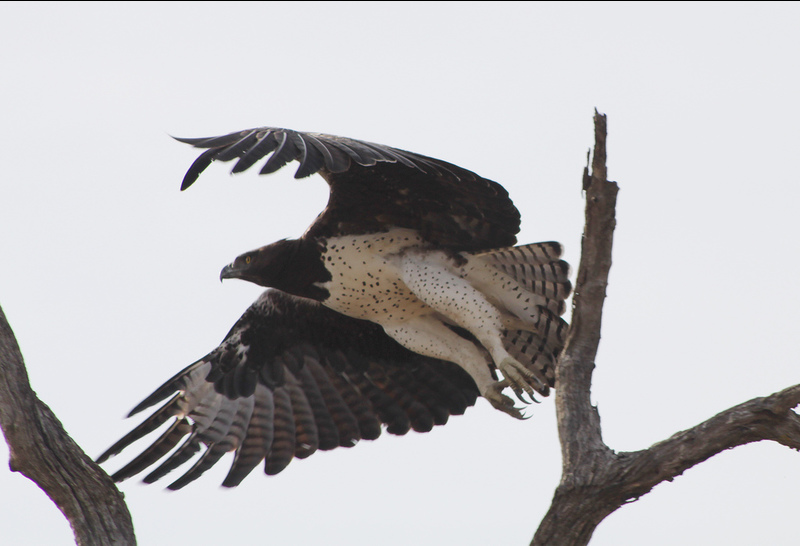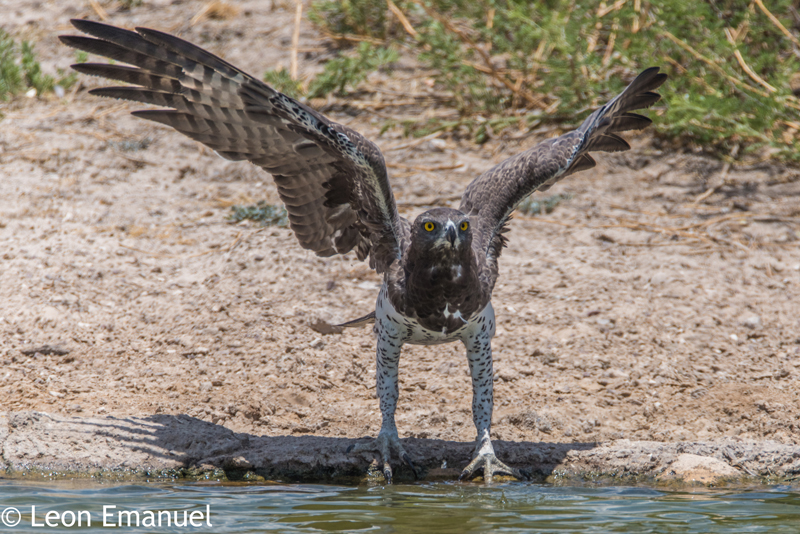Africa’s largest eagle in free fall
10 October 2017 | Story Supplied.
The population of Martial Eagles, Africa’s largest eagle species, is in free fall in South Africa and may be heading towards extinction. This is according to a new UCT study based on changes in sighting rates over the past 20 years.
Martial Eagle sightings have dropped by as much as 60% since the late 1980s, in stark contrast to human population growth across their shared natural habitat, said the study, which was published this week in the scientific journal Bird Conservation International.
Although the reasons for the decline remain unclear, researchers said that their findings point to an urgent need to better understand the threats to this iconic bird.
The research was conducted by Dr Arjun Amar and PhD student Daniël Cloete of UCT’s FitzPatrick Institute of African Ornithology, using two Southern African Bird Atlas Project (SABAP) surveys carried out 20 years apart. Their previous research showed that comparing these surveys provided an accurate way of measuring changes in the population size of this eagle species.
Protected areas a buffer?
Worryingly, the study also highlighted a marked decline in Martial Eagle sightings within protected areas, including in the world-famous Kruger National Park and the Kalahari Gemsbok National Park. However, declines in populations of the species in protected areas were not as severe as elsewhere, suggesting that these areas could act to buffer the factors leading to declines.
Martial Eagles mainly prey on large birds and reptiles, and small- and medium-sized mammals, but are strong enough to prey on small antelopes. They typically nest in high treetops.

Their plight made international headlines last year when Mozambican hunters killed an adult bird that had featured in a British documentary starring well-known wildlife presenter Steve Backshall. At the time, the bird was being tracked via a GPS satellite tag.
Total population figures for Martial Eagles are still relatively inexact, but their conservation status was changed in 2013 from “near threatened” to “vulnerable” – which means that they are recognised as being globally threatened.
The study published this week provides the most accurate assessment for the decline of the species in any African country and was possible due only to an army of volunteer bird watchers who contribute their sightings to the SABAP database.
Fynbos sightings stable
The study found significant declines in three provinces: KwaZulu-Natal, Mpumalanga and Limpopo. Changes differed across the biomes (distinct regions with similar geography and climate), with the species faring worst in the Grassland, Savanna, Indian Ocean Coastal Belt and Nama-Karoo biomes.
However, there was better news in the Fynbos Biome of the Western and Eastern Cape, where reporting rates remained more stable over the past 20 years.
“Despite having full legal protection in South Africa, this species is known to be targeted and killed by farmers who blame the species for predation of their livestock, or may be accidentally killed by poison left to kill other predator species,” the authors noted.
Another major threat for Martial Eagles may be electricity infrastructure, such as power lines, particularly among juveniles, which have a wider territorial range.
“We have now quantified the decline of the species in South Africa,” said lead author Amar. “But that is the only the first step. We now need urgent research to better understand the factors that are responsible for causing this iconic species to be lost from our countryside, so that these can be better controlled.”
Read the full paper in Bird Conservation International...
 This work is licensed under a Creative Commons Attribution-NoDerivatives 4.0 International License.
This work is licensed under a Creative Commons Attribution-NoDerivatives 4.0 International License.
Please view the republishing articles page for more information.









_juvenile_(13816501623)_0.jpg)
